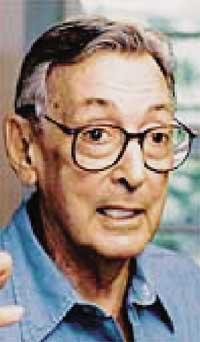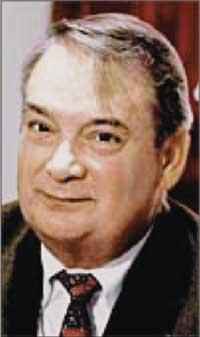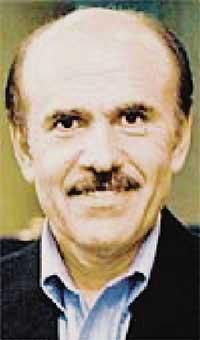1998 Nobel Prize in Medicine for Nitric Oxide:
1998/12/01 Elhuyar Zientzia Iturria: Elhuyar aldizkaria

The Karolinska Institute in Stockholm, which annually awards the Nobel Prize in Medicine, has awarded three American pharmacologists for discovering that nitric oxide is a signal molecule of the cardiovascular system. The three researchers have worked separately, never together, although they met each other.
Robert F. When Furchgott investigated certain drugs and the effect of drugs on blood vessels, he achieved contradictory results: the same substance caused blood vessel contraction in some cases and dispersion in others. He thought that Furchgott's behavior change could occur because the skin cells (endothelium) inside the blood vessels were damaged or healthy.
In 1980, through an experiment, a substance, if the endothelium was not deteriorated, could demonstrate that it extended the blood vessels. He concluded that blood vessels are extended because endothelium cells produce an unknown molecule that serves to transmit signals and that this molecule relaxes the cells of the vessels. This unknown chemical runner was called endothelium-derived relaxation factor and began to identify him in the coming years.
Ferid Murad discovered in 1977, while studying the work of nitroglycerin and other vasodilators at the University of Virginia, that these compounds release nitric oxide and it relaxes muscle cells. The idea that a gas, nitric oxide, could influence the important functions of cells, surprised and suggested that endogenous factors, such as hormones, could act through NO, but could not prove it experimentally.

Louis J. Ignarr, R. In line with Furchgott's studies, he undertook the search for the chemical composition of the aforementioned relaxation factor. After numerous analyses, in 1986 he discovered that Furchgott's relaxation factor was nitric oxide. For his part, and in the same year, R came to that conclusion. Furchgott himself. Both presented their conclusion at an international conference (1986), so a lot of research was launched in laboratories around the world. And it is that a simple gas molecule of this type (which only contains a nitrogen atom and an oxygen atom) acts in the organism as a signal molecule, that is, transmits signals through the organism, was the first time it was found.
Nitric oxide paradox
Outside wolf: Nitric oxide (NO) is a colorless, toxic gas. It forms in combustion reactions at high temperature and pressure, such as evacuation by car exhaust, and when taking off it becomes nitrogen dioxide. Nitric oxide irritates the nostrils and eyes and is an important pollutant in the atmosphere, mainly due to its participation in reactions from numerous episodes of pollution. For example, stratospheric NO is one of those responsible for decreasing the ozone layer.
In dove house: contrary to what the Basque proverb says, nitric oxide, harmful pollutant in the air (outside), is beneficial in the organism (at home). This is surprising, as NO is totally different from other signal molecules and is totally unstable, as it does not last more than 10 seconds, as it is quickly combined to form nitrates and nitrites. Some bacteria were known to synthesize nitric oxide, but no one thought that this simple molecule could be as important in tall animals as mammals.

Post-discovery research immediately confirmed the importance of NO in the cardiovascular system. But not only there. It has now been shown that NO also acts as a signal molecule in the nervous system, as an anti-infection weapon and as a blood pressure regulator. NO is found in the body of most living beings and there are many types of cells that produce arginine from the amino acid.When NO forms in the innermost cell layer of the arteries, the endothelium, spreads rapidly through cell membranes to muscle cells, relaxing the contracted muscles and thus extending the arteries. Thus, NO controls blood pressure and blood distribution. In addition, it prevents the formation of thrombi, coacids.
When NO is generated in nerve cells it spreads rapidly in all directions, acting on the surrounding cells and modulating many functions. And in infections, for example, in white blood cells large amounts of nitric oxide are produced and released that, being toxic, attacks bacteria and parasites.
This year's Nobel Prize has not been a coincidence for experts in the field and it can be said that the international scientific community was waiting in some way, since the discovery has a great conceptual importance to explain cardiovascular phenomena and on the other hand has opened the way to many lines of research.

Gai honi buruzko eduki gehiago
Elhuyarrek garatutako teknologia




